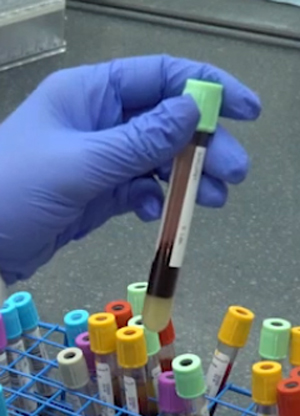Underfilling Tubes Causes Hemolysis, Alters Results
Those who draw blood samples should recollect underfilled tubes before leaving the patient
by Dennis Ernst • April 12, 2021

A lot of people don't think underfilling a tube affects test results very much, if at all. Blood is blood, right? Wrong.
Tube manufacturers put a precisely calibrated amount of anticoagulant into their tubes so that it prevents clotting without affecting test results. When tubes with additives are underfilled, it disrupts the delicate chemistry in the sample and alters the components of the blood so drastically that it no longer reflects the patient's true health status.
I harp on this all the time. Many of you do, too. But it's amazing how many healthcare professionals who draw blood samples think it's only a theory. A recent study published in Clinical Chemistry and Laboratory Medicine provided more evidence that it's fact.
Researchers in Germany (Neuwinger et al) showed underfilling not only affects results obtained on heparin tubes, but serum tubes as well. That came as a surprise to me. I was involved in a study that proved underfilled heparin tubes wreak havoc on test results a few years ago. But this is the first published study on underfilled serum tubes I'm aware of. An even bigger surprise to me was that the German researchers found underfilling not only alters test results, but causes samples to hemolyze.
They collected blood samples from healthy volunteers into both serum and heparin tubes. Tubes in the control group were completely filled whereas tubes in the study group were underfilled by 50%. All tubes were assayed for potassium, sodium, chloride, LD, creatine kinase, total cholesterol, and indices for hemolysis, icterus, and lipemia.
Underfilled serum tubes showed 21.6% higher LD levels, 4.2% higher potassium results and a 261% increase in the hemolysis index. Other analytes remained largely unchanged. For underfilled heparin tubes, LD and potassium levels were 21.6% and 28.3% higher respectively. The hemolysis index was 210% greater.
These results further reinforce the findings of other researchers including the study I was involve in, which was published in the British Journal of Biomedical Science in 2012. Along with Guisseppi Lippi and others, we assessed the LD, AST, ALT, GGT and CK levels on filled and underfilled (1/2 and 1/3 filled) heparin tubes drawn from 20 healthy volunteers. We did not find LD levels to be affected (possibly due to drawing only 20 volunteers), nor did we assess hemolysis rates. However, we did find CK and GGT results to be significantly depressed in heparinized tubes that were half and one-third filled.
Since phlebotomists and other healthcare professionals never know when a draw is going to become problematic and yield less-than-anticipated blood volumes, it's a good practice to stock all phlebotomy trays and draw stations with a wide variety of tube sizes, including low-volume tubes with lesser anticoagulant and lower vacuum. The key is to deliver to the laboratory samples that have the proper blood:anticoagulant ratio so that test results can accurately reflect the patient's physiology. Underfilling doesn't just affect heparin tubes, but EDTA and citrate tubes as well. Citrate tubes for coag are especially sensitive to underfilling, and can produce wildly inaccurate aPTT results when just 10% underfilled.
Read the Neuwinger et al abstract.
Read the Ernst, Lippi, et al abstract.
Related Posts and Information
overall rating: my rating: log in to rate
CK GGT hemolysis hemolyzed heparin lactate dehydrogenase tube underfilled
